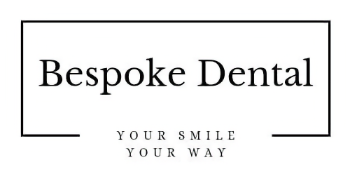Key Qualifications to Evaluate When Choosing an Oral Surgeon in Your Local Area

Choosing a board-certified oral surgeon in your local area starts with understanding how formal qualifications, focused experience, and facility standards combine to reduce risk and improve outcomes. This article explains what “board-certified oral surgeon” means, why degrees and residency training matter, how to evaluate procedure-specific experience, which facility accreditations and technologies improve safety, and how patient reviews and communication quality factor into your decision. Readers will learn concrete verification steps — where to check licensure and ABOMS diplomate status — and practical questions to ask during consultations. The guidance emphasizes evidence-backed mechanisms linking credentials to safety and outcomes, plus short checklists and comparison tables you can use when comparing local surgeons. By the end, you will have a prioritized checklist for selecting an oral and maxillofacial surgeon for implants, wisdom teeth, TMJ treatment, or facial trauma care.
What Are the Essential Credentials and Board Certifications for Oral Surgeons?
Board certification and professional licensure establish two separate safeguards: licensure confirms legal permission to practice, while board certification demonstrates additional surgical training and peer-reviewed competency. Board certification → indicates → standardized surgical competency, and the American Board of Oral and Maxillofacial Surgery (ABOMS) is the primary diplomate credential patients should understand. Verifying both credentials online is an essential step because licensing boards and ABOMS maintain public directories that document current status and any disciplinary actions. Clear verification reduces uncertainty about training depth and ongoing maintenance requirements for high-risk procedures.
ABOMS: The Certifying Body for Oral and Maxillofacial Surgery
The American Board of Oral and Maxillofacial Surgery (ABOMS) is the certifying organization for the specialty of oral and maxillofacial surgery in the United States. It is responsible for establishing and maintaining standards for the education, training, and practice of oral and maxillofacial surgeons. The ABOMS examination process is rigorous and designed to ensure that diplomates possess the knowledge and skills necessary to provide high-quality patient care.
American Board of Oral and Maxillofacial Surgery Role as the Certifying Organization in Oral and Maxillofacial Surgery, 2011
Different credentials and what they indicate in training and competency:
Degree / CertificationWhat it RepresentsWhat to ExpectDDS / DMDDental doctorate indicating foundational dental educationBasic dental and oral health competence; clinical rotations in dental schoolResidency (OMFS)4–6+ years surgical residency in oral and maxillofacial surgeryHands-on surgical training in extractions, implants, trauma, anesthesiaABOMS DiplomateBoard certification after exams and peer reviewDemonstrated specialty competency and maintenance of certification
This comparison helps you separate baseline qualifications from specialty-level certification.
What Does It Mean to Be a Board Certified Oral Surgeon?
Board certification through ABOMS requires completion of an accredited residency, successful passage of rigorous written and oral examinations, and ongoing continuing education. The certification process tests clinical judgment, surgical technique, and judgment in perioperative medicine; passing it signals that a surgeon has met nationally recognized standards. Patients should interpret “ABOMS diplomate” as a marker of specialty training beyond dental school and as evidence the surgeon participates in lifelong learning. Small verification steps — checking ABOMS listings and state dental board records — confirm diplomate status and identify any restrictions on practice.
ABOMS Diplomate Status: Verifying Oral Surgeon Credentials
The American Board of Oral and Maxillofacial Surgery (ABOMS) is a key organization that verifies the credentials of oral and maxillofacial surgeons. Diplomates listed on the ABOMS registry have met specific educational and training requirements, ensuring a standard of expertise in the field. This verification is crucial for patients seeking qualified practitioners.
The oral medicine workforce and impact on access to care in the United States, L Alabdulaaly, 2024
How Do Oral Surgeon Degrees and Training Impact Their Expertise?
Degrees such as DDS and DMD are equivalent labels for dental doctorates and form the base of an oral surgeon’s education, but surgical competence depends on residency length and case exposure. Residency training in oral and maxillofacial surgery typically includes hospital rotations, anesthesia experience, and exposure to complex facial trauma, which directly improves surgical decision-making and outcomes. MD degrees held in addition to DDS/DMD reflect combined medical-surgical training and may be relevant for complex reconstructive cases. Ask surgeons about residency programs, hospital privileges, and continuing education to understand how their training maps to your procedure needs.
How Important Is Experience and Specialization When Choosing an Oral Surgeon?
Experience and focused specialization correlate with better technical proficiency and lower complication rates for specific procedures; procedure volume → predicts → refined skill and predictable outcomes. When comparing surgeons, consider both years of practice and annual case volume for the procedure you need, because high-volume experience often improves pattern recognition and intraoperative efficiency. Specialized experience also means exposure to wider ranges of patient anatomies, comorbidities, and complication management strategies, which can translate into safer care and better recovery planning. Practical verification includes requesting aggregate outcomes, complication rates, or anonymized case examples during consultation.
Recommended experience metrics and how to interpret them:
- Dental implants: Look for surgeons who report steady annual implant volume and routinely manage bone grafting and sinus-lift procedures.
- Wisdom teeth removal: Prefer clinicians with frequent third-molar extraction caseloads and clear post-op protocols for nerve protection.
- TMJ treatment: Choose surgeons who combine diagnostic experience with non-surgical management coordination and documented procedural outcomes.
These metrics help frame objective comparisons and identify when a surgeon’s specialization matches your needs.
How Many Years of Practice and Procedure Volume Should You Consider?
Years in practice provide context but are not the sole indicator of competence; recent, procedure-specific volume and documented outcomes are more predictive for many surgeries. Reasonable benchmarks include selecting a surgeon who performs a given procedure regularly — for example, dozens of implants per year or frequent third-molar extractions — and who can discuss typical complication rates and revisions. Newer surgical techniques can reduce raw-year expectations, but they require formal training and mentored experience; therefore, verify continuing education and case supervision. Ask direct, specific questions about how many similar procedures the surgeon has performed recently and what their individualized complication mitigation strategies are.
Which Specializations Matter: Dental Implants, Wisdom Teeth Removal, TMJ Treatment?
Different procedures demand different technical skills, technology, and perioperative planning: implants require prosthetic coordination and bone-management skills, third-molar surgery stresses atraumatic extraction techniques and nerve protection, and TMJ work often needs multidisciplinary assessment. Specialization allows surgeons to refine protocols for anesthesia, imaging, and postoperative rehabilitation, reducing recovery time and complications. When evaluating a surgeon, match their documented case types to your needs and confirm they have experience with relevant adjuncts such as bone grafting, guided implant workflows, or conservative TMJ interventions. Specific consultation questions include asking for examples of similar cases and expected recovery timelines.
Procedure TypeRecommended Experience MetricWhy It MattersDental implantsRegular annual implant cases and grafting experienceImproves prosthetic outcomes and reduces graft failureWisdom teeth removalHigh annual extraction volume, nerve-sparing techniquesLowers nerve injury risk and shortens recoveryTMJ treatmentMultidisciplinary cases and non-surgical coordinationEnsures accurate diagnosis and tailored therapy
This table clarifies which metrics to prioritize when comparing local surgeons.
What Facility Standards and Advanced Technologies Should You Look For?
Facility accreditation and modern imaging technologies directly improve diagnostic precision, perioperative safety, and procedural accuracy for oral surgery. Accreditation bodies such as AAAHC, AAAASF, or the Joint Commission audit sterilization, emergency preparedness, anesthesia credentialing, and staff competencies; accreditation → demonstrates → external safety validation. Advanced technologies like cone beam CT (CBCT), 3D surgical planning, and guided implant systems increase precision, reduce operative time, and help plan around critical anatomy. Always confirm that anesthesia providers are credentialed and that the facility maintains emergency protocols and appropriate monitoring equipment.
Accreditation Standards for Oral Surgery Facilities
Accreditation of outpatient surgery facilities is a critical component in ensuring patient safety and quality of care within oral and maxillofacial surgery. Facilities that undergo this rigorous evaluation demonstrate a commitment to meeting high standards in surgical procedures, patient management, and overall operational excellence. This certification process provides an additional layer of assurance for patients choosing an oral surgeon.
Accreditation of Outpatient Surgery Facilities, 2017
Patients should expect clinics to be transparent about accreditation and technology:
- Accreditation indicates regular third-party safety audits and protocol enforcement.
- CBCT and 3D planning improve implant placement accuracy and reduce nerve proximity risks.
- On-site or affiliated anesthesia professionals with hospital privileges enhance perioperative safety.
Accreditation / TechnologyWhat It IndicatesPatient BenefitAAAHC / AAAASF / Joint CommissionExternal audits of safety, sterilization, emergency planningLower system-level risk and standardized protocolsCBCT / 3D imagingHigh-resolution anatomical visualizationPrecise planning and reduced surgical surprisesGuided surgery systemsDigital planning-to-operating transferIncreased implant accuracy and prosthetic fit
High-quality practices commonly adopt accreditation and advanced technology to enhance care.
Why Is Facility Accreditation Critical for Patient Safety?
Accreditation bodies evaluate infection control, emergency equipment availability, staff training, and anesthesia protocols — each a factor that directly reduces perioperative risk. The audit process typically includes document review, on-site inspection, and periodic re-evaluation to ensure continued compliance with safety standards. For patients, accreditation provides independent assurance that the facility follows evidence-based sterilization and emergency response procedures, which matters for any procedure requiring sedation or general anesthesia. When discussing options, ask which accreditation the facility holds and how often external audits occur.
How Do Advanced Technologies Like 3D Imaging Improve Oral Surgery?
CBCT and 3D surgical planning enable surgeons to visualize bone volume, nerve pathways, and sinus anatomy in three dimensions, which reduces intraoperative surprises and refines implant trajectories. Guided surgical systems translate digital plans into precise intraoperative positioning, decreasing operating time and improving prosthetic outcomes. These technologies support better patient education by allowing visual walkthroughs of proposed procedures and anticipated results. Ask a surgeon how they incorporate CBCT, virtual planning, or guided workflows into your specific treatment plan.
How Can Patient Reviews and Communication Influence Your Choice of Oral Surgeon?
Patient reviews and clear clinician communication provide insight into outcomes, complication management, and the overall care experience; communication quality → reduces → patient anxiety and improves adherence to postoperative instructions. Reviews that mention consistent clinical outcomes, transparent complication handling, and staff professionalism are stronger signals than isolated praise or complaints. Evaluating both aggregated ratings and the substance of comments helps you separate marketing from clinical reality. During consultations, assess how the surgeon explains risks, alternatives, and postoperative expectations — strong communicators help patients feel informed and more confident about recovery.
What to watch for when reading reviews and testimonials:
- Outcome-focused comments: Mentions of pain control, healing speed, and restoration success indicate clinical competence.
- Complication transparency: Reviews describing how issues were addressed reveal a practice’s follow-up quality.
- Communication and staff behavior: Notes on how well questions were answered and how staff handled scheduling or concerns reflect the patient experience.
After reviewing feedback, use direct consultation questions to test communication quality and confirm your comfort with the surgeon’s explanations.
What Should You Look for in Patient Reviews and Testimonials?
Look for consistent themes across multiple reviews rather than isolated statements; repeated mentions of excellent pain management, clear expectations, and effective follow-up suggest reliable care. Trustworthy review sources include professional directories and health-specific platforms that allow detailed accounts and moderated responses. Avoid over-weighting single negative comments and instead ask the practice to clarify any concerns that appear in reviews. When in doubt, ask the surgeon for anonymized case examples or references that demonstrate their outcomes and patient communication practices.
Why Is Clear Communication and Bedside Manner Important for Patient Comfort?
Clear explanations reduce anxiety by setting realistic expectations for pain, swelling, recovery milestones, and follow-up care, which improves adherence to instructions and lowers complication risk. Good bedside manner also encourages patients to share relevant medical history and post-op concerns promptly, enabling faster intervention if problems arise. During consultation, test communication by asking the surgeon to describe risks in plain language and to outline alternatives and recovery steps. Sample questions include asking about expected healing timelines, signs that require urgent contact, and how complications would be managed.





